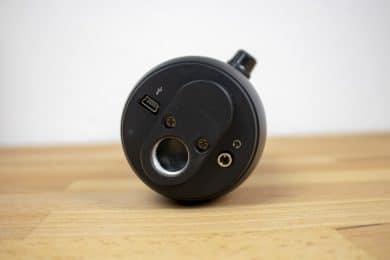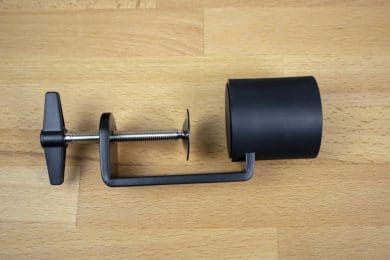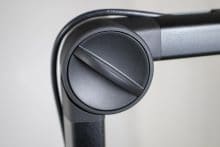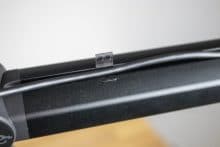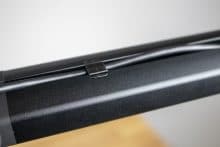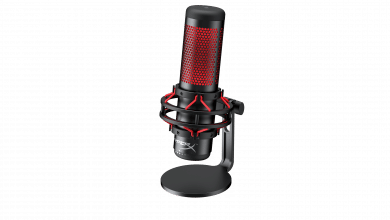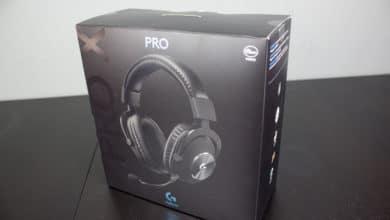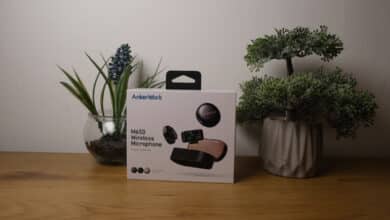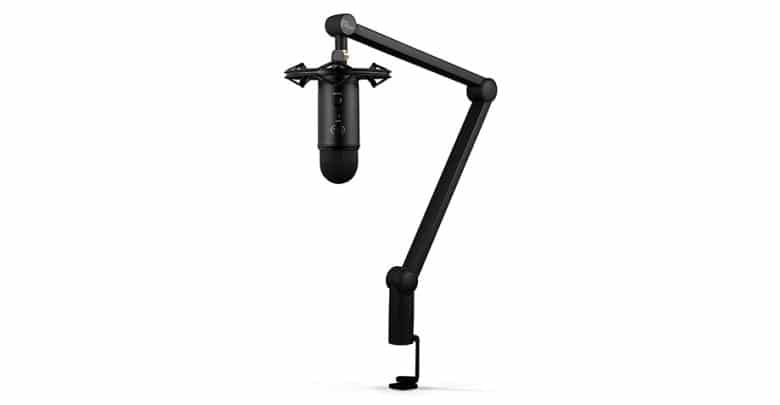
The streaming equipment is becoming more and more professional. Just a few years ago even well-known YouTuber recorded videos with classic recording devices – video and audio tracks from smartphones were not uncommon either. Today, however, even amateurs use highly professional technology to produce sophisticated content. It is therefore not surprising that the market for home recorders continues to grow.
In addition to table microphones, which are now quite widespread, devices attached to microphone arms are also becoming increasingly popular – after all, they are extremely practical in semi-professional use. Blue, with its numerous microphones, plays an important role in this constantly growing market, so it is not surprising that this well-known manufacturer also sells a microphone with a microphone arm.
We have subjected the “Yeticaster”, which acts as a kind of starter set for the semi-professional streaming and broadcasting sector, to an extensive practical test. After all, not every praised product delivers what it promises. The following test report reveals how the microphone with the arm performed in the practical test.
Design and Workmanship
Now a microphone usually doesn’t have to meet any aesthetic requirements – nevertheless, we thought it would make sense to evaluate the visual appearance of the product as well. In doing so, we have taken into account the fact that Blue itself seems to have attached great importance to this aspect of the device.

The evaluation of the design is thus already anticipated in large parts: The manufacturer has endeavoured to be able to present a product that is also visually appealing. In our opinion, this has been successful. In matt black, the microphone and arm present themselves classically and convincingly. In addition, there is a shielding mount that also fits well with the other two components of the setup.
However, the workmanship of the microphone appears to be much more important. Here, too, we cannot find any points of criticism. In our opinion, the classic, elegant appearance of the microphone is far more than a distraction. The impression created by this design is also consistently continued in the workmanship. The microphone is robust enough to withstand daily use for long periods without damage. Also the arm of the microphone seems to be extremely stable and perfectly finished.
The total weight of slightly more than 2.2 kilograms also testifies to the robust design of the device. The swivel arm is heavy without being too heavy. It can be adjusted without any problem and never causes unpleasant surprises.
Construction and Possibilities
The swivel arm not only convinces in the test with integrated cable management, but also with integrated springs and the possibility of simple table mounting. It can be adjusted at will and thus offers many possibilities in practice. The USB microphone “Yeti” from Blue is attached to it. This black recording device, which is also quite robust, is shielded by an elastic holder.
As already mentioned, the microphone is operated via USB cable. The cable guide integrated in the swivel arm allows the cable to be attached almost invisibly. The optics of the setup, which might be important in the streaming area, will not be disturbed by the cable.
The maximum horizontal range is 81.3 centimeters, the microphone can be rotated 360 degrees. The user is by no means restricted here. Rather, he has completely unlimited possibilities to adjust the setup to suit his individual needs.
The microphone can be mounted on the arm quickly and without major problems during the test. The intuitively understandable screw cap is cleverly chosen. The same applies to finding the right arm position. Note that the springs in the arm are preset and should not be adjusted unless really necessary.
The arm carries a maximum of one kilogram – including microphone and shielding holder. This weight turned out to be absolutely sufficient in our practical test, so that we cannot find any points of criticism regarding the possibilities offered.
Practical Test: Recording or Streaming Quality
This brings us to the core of this test report: The recording quality provided by the microphone. It should be mentioned here that the “Yeticaster” uses the Yeti USB microphone that is included in the scope of delivery. This device is operated via USB cable and operates in the frequency range between 20 and 20,000 Hz. It also has a sampling rate of 48 KHz and a bit rate of 16 bit. It also has a capacitor capsule and a pressure gradient capsule.
All these details can easily be found on the manufacturer’s website and any reputable dealer who sells the microphone or the entire package. What is really interesting in the context of this test is practice – can the microphone also convince ambitious streamers and broadcasters?

First of all it should be mentioned that the various possibilities of adjusting the directional characteristic pay off in practical use. The microphone can be used with cardioid, eight, omnidirectional and stereo characteristics. This makes it suitable for a wide range of applications, which should certainly appeal to the user. Not only classic streaming recordings, but also interviews with two or more people can be recorded without problems and without any loss of quality.
Manufacturer Blue also states that the microphone is suitable for recording music. Acoustic and electric guitar tones should be recorded as appropriately as drums, piano and bass tones. Of course, singing should be recorded to your complete satisfaction. As the reader of this page will suspect, we could not actually test every instrument Blue indicated. As far as it was possible during a practical test, however, we checked the manufacturer’s specifications and found that the microphone is actually very versatile – in the recording studio it is probably out of place, but anyone who wants to make semi-professional vocal recordings from time to time without investing too much money is well served with it.
Another positive feature is that it does not pick up any background noise. This is ensured, among other things, by the shielding holder of the microphone.
Overall, the sound can be described as balanced and surprisingly low-noise. USB microphones usually have to struggle with a disturbing background noise. This is not completely absent in the tested microphone, but only very discreetly present. Ultimately, the sound and recording quality can be described as very good.
Usability and Requirements
The fact that no software is required to use the microphone is pleasing. It can be used to its full extent immediately after connection. The necessary system requirements are met by Macs running OSX 10.4.11 or later and Windows PCs running Windows 7, 8 or 10. In addition, the device used must have a USB port.
The average streamer or broadcaster should have no problems meeting these system requirements. In our practical test, the microphone could be used immediately after connection.
Conclusion of the Blue Microphones Yeticaster Review
The package offers a very good and above all very cheap entry into the more or less professional streaming and broadcasting world. Anyone who has already gained initial experience in this field and now wants to professionalise without investing too much money will find the “Yeticaster” from Blue an excellent admission package.
Blue Microphones Yeticaster
Workmanship
Assembly
Sound
Usability
Value for Money
The package offers a very good and very cheap entry into the world of streaming and broadcasting.

